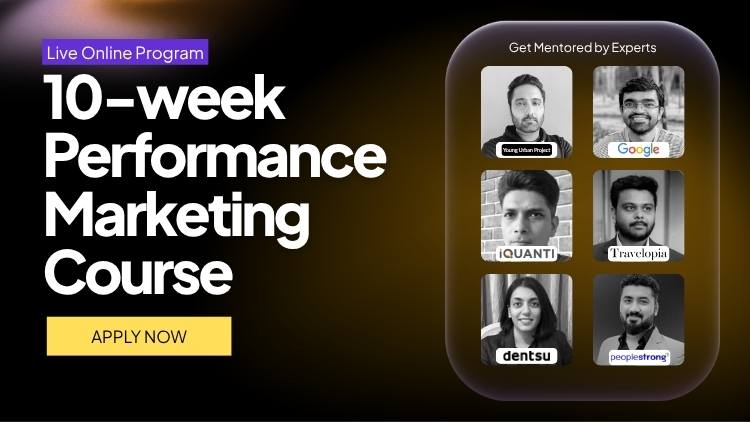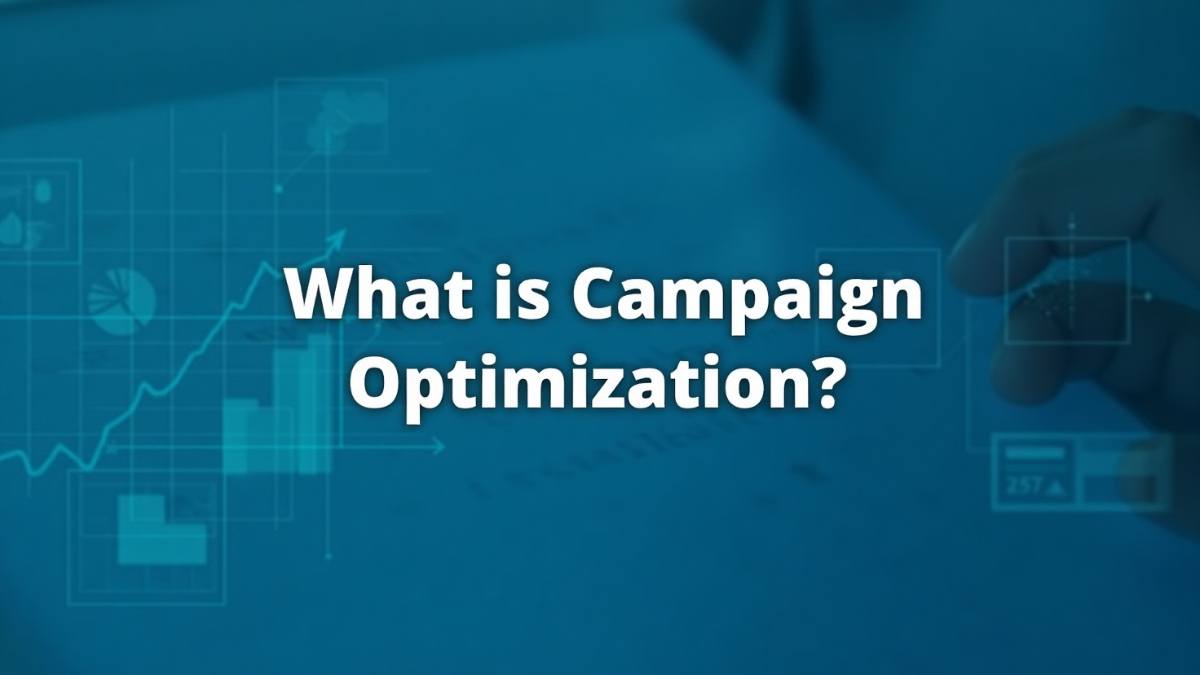If you’re running digital ads and wondering why the results are… just okay, not great, you’re not alone. That’s where the question “What is campaign optimization?” starts to matter. In simple terms, it’s the ongoing process of fine-tuning your marketing campaigns, adjusting audiences, creatives, bids, and more, to get better results over time. It’s not just for big brands with massive budgets. Even small tweaks can lead to big wins if done right. In this guide, we’re breaking down exactly how campaign optimization works, why it’s essential, and how to start doing it without overcomplicating the whole thing.
Table of Contents
What is Campaign Optimization?
Okay, so campaign optimization… what even is that?
At the simplest level, it’s about not letting your marketing campaign run on autopilot. You launch a campaign, sure – but then you watch it. You test stuff. You fix what’s not working. You double down on what is.
It’s basically the opposite of “set it and forget it.”
You might start with one idea of how things will go. But once the data starts coming in – clicks, conversions, drop-offs – you realize, “Oh, maybe this headline isn’t working” or “We’re spending way too much on mobile traffic that’s not converting.” So, you tweak things. Then tweak again. That’s optimization.
And these days, you have to do this. There’s just too much noise online. Everyone’s running ads. People scroll fast. Algorithms are picky. If you don’t actively optimize, your campaign gets buried or burned out. Simple as that.
Why Campaign Optimization Even Matters
Let’s get into why this isn’t just a “nice to have.”
1. You Get Way More Out of Your Ad Spend
Let’s say you’re running a Google Ads campaign budget of ₹50,000. If you leave it alone, you might get okay results. But if you check in after a few days, pause the bad keywords, boost the ones that convert, swap in a better landing page… suddenly, you’re getting more sales for the same money.
More return, less waste.
That’s the whole point.
2. You Actually Hit the Right People
Most ad platforms can technically find your audience. But without tuning, it’s a bit of a spray-and-pray situation. Like, Facebook might show your ad to a million people who kind of fit your target, but 90% of them don’t care.
When you optimize, you start narrowing in: “These people clicked, but didn’t buy. These did buy, and they came from Instagram Stories between 9-11 AM.” That kind of clarity only comes from tweaking and learning as you go.
3. You Can React While It’s Happening
This is a big one. With digital campaigns, you don’t have to wait a month to see results. You can check in today and see what’s happening.
If your CTR is tanking or your cost-per-click is spiking, you can fix it – right now. Pause the worst-performing ad. Move the budget to the better one. Or just shut the whole thing down and try again.
No shame in that. It’s smart.
4. You Stop Wasting Money
Honestly, this one hurts if you’ve ever looked back at an ad report and thought, “Why the hell did we spend ₹10,000 on this audience that didn’t buy anything?”
Happens all the time. But campaign optimization helps you spot those money leaks early. It’s not about being perfect – it’s about catching stuff before it eats your whole budget.
Also Read: Marketing Automation Strategy
The Core Pieces That Make Optimization Work
So if you’re gonna optimize a campaign properly, what does that actually involve?
There’s really three main layers: strategy (the big-picture stuff), tactics (the hands-on stuff), and tech (tools that help you do it faster or better). Let’s break it down.
A. First: Strategy
- Know what you’re trying to achieve
Are you after leads? Sales? Traffic? Brand awareness? If you don’t know, nothing else works. - Pick the right numbers to track
Clicks are nice, but did they buy? Focus on metrics that actually tie to results, like cost per lead, ROAS, or how many people made it through your funnel. - Understand your audience
Not just age and location. Like, how they behave. Are they just browsing? Ready to buy? Returning customers? Tailor your approach based on that.
You don’t need to overcomplicate it. Just have a clear goal and a way to tell if you’re getting closer to it.
B. Then: Tactics (The Day-to-Day Stuff)
- Test everything
Run two versions of your ad. Try different images. Different offers. Keep the one that works better. Kill the one that doesn’t. Rinse and repeat. - Move your budget where it works best
If Instagram Reels is killing it, maybe pull back on Facebook Feed. Don’t just “set budgets” and leave them. Shift them as results come in. - Fix the landing page
If your ad is getting clicks but no sales… the problem might not be the ad. It might be the page they land on. Slow load time? Confusing layout? Too many form fields? Fix that. - Use multiple platforms, but wisely
Don’t be everywhere just to say you are. Be where your audience actually converts. That might be search + email. Or TikTok + remarketing. Don’t guess-test. - Watch what’s happening, constantly
Don’t go dark for a week. Check daily. Even quick 10-minute check-ins can catch big issues before they burn money.
Campaign Optimization: Step-by-Step
Alright. We’ve talked about the what and the why.
Now let’s break down the how. If you’re wondering “Where do I even start?”, this section’s for you. You don’t need a huge team or a fancy agency to do this. You just need to follow the steps, pay attention to what’s working, and be ready to make changes.
Step 1: Plan First (Please, Plan)
Before you even touch an ad platform, take a step back.
Who are you trying to reach? What do you want them to do? What kind of messaging might actually get them to care?
You’d be surprised how many campaigns flop simply because they were rushed. No audience research. No clear goal. Just vibes.
Take a few hours (or even a day) to get clear on:
- Your main goal, sales, leads, traffic, whatever
- Your ideal customer, age, habits, what they care about
- What your offer is, and why it should matter to them
Step 2: Launch It (But Keep Your Eyes Open)
Now, get your campaign live.
Don’t overthink it, just get a solid version out there. But once it’s up, resist the urge to walk away.
This is the “collect data” phase. You want to let the campaign run long enough to get a feel for what’s actually happening. Are people clicking? Are they bouncing? Are conversions coming in?
Important: Don’t panic too early. Give it enough time and spend to gather real data. If you pull the plug too soon, you never learn anything.
Step 3: Review the Numbers (Without Drowning in Them)
After a few days or once you hit a decent sample size (depends on budget, but let’s say 1,000+ impressions and a handful of conversions), start looking at the performance.
Here’s what you want to know:
- Which ads are performing best?
- Which audiences are converting?
- Are there big drop-off points in your funnel?
- What’s your CPA (Cost Per Acquisition) looking like?
You don’t need to analyze every chart. Just zoom in on the stuff tied to results.
Step 4: Test Something (Just One Thing at a Time)
Now comes the fun part: you start tweaking.
Maybe your ad creative isn’t clicking with people. Try a new image. Or test a headline with a more direct offer.
Maybe your best audience is converting, but at a high cost. Try narrowing it down. Or expand slightly and see what happens.
But, and this is key, test one thing at a time. If you change the ad, audience, landing page, and budget all at once, you won’t know what actually made the difference.
Step 5: Scale What’s Working
Once you’ve got a winner, like a creative-audience combo that’s actually driving results, lean in hard.
Push more budget into it. Maybe duplicate it and test a slight variation. Or build a lookalike audience from it.
This is also where automation can start to help. Set up rules or use smart bidding tools to automatically raise budgets when certain thresholds are hit. But don’t totally check out, even automation needs human oversight.

Also Read: Performance Marketing Course
Tools That Actually Help (Not Just Sound Fancy)
You don’t need a million-dollar tech stack. But a few tools can really make optimization easier:
- Google Analytics / GA4
Still the go-to for understanding user behavior on your site. Great for spotting drop-offs or tracking what sources are driving actual conversions. - Meta Ads Manager / Google Ads Platform
Obviously. But use their reporting features properly, dig into breakdowns by placement, age, device, etc. - Hotjar or Microsoft Clarity
If you want to see how people are using your site or landing page, like where they drop off, what they click, or where they rage-click, this stuff is gold. - Email/CRM tools (like Klaviyo, HubSpot, Mailchimp)
Helps with segmenting, retargeting, and personalization. Especially important once you’re collecting leads or selling. - AI Optimization Tools (if you’re into that)
There are some cool ones that help with dynamic creative, predictive bidding, or multi-channel dashboards (like Madgicx, Revealbot, or Funnel.io). Use them to enhance your judgment, not replace it.
Also Read: Analytics in Performance Marketing: Step-by-Step
Mistakes People Make (So You Can Avoid Them)
Even smart marketers mess this stuff up. Honestly, it’s usually not because they’re lazy or clueless, it’s just easy to overlook things when you’re juggling 10 campaigns, five deadlines, and your Slack won’t stop pinging.
Here are some of the most common slip-ups, along with a bit of real-talk on how to dodge them:
1. Optimizing Too Early
You launch your ad, it’s been live for 24 hours, and you already want to kill half the targeting and rewrite your copy. Hold up.
Early data is often noisy. Maybe the platform’s still figuring out who to show it to. Maybe you just haven’t hit enough impressions for a clear signal. If you make big changes too soon, you’ll end up chasing ghosts instead of patterns.
Fix: Give it room to breathe. Wait for at least a few hundred clicks (or a few conversions) before judging anything.
2. Falling in Love with Vanity Metrics
Click-through rates (CTR), impressions, likes… they’re all fun to look at. But they don’t always mean much. You could have a 10% CTR and still get zero sales.
Likes don’t pay the bills.
Fix: Always tie your metrics back to the end goal. Are you getting leads? Purchases? Sign-ups? That’s what matters. Everything else is just noise unless it helps explain why.
3. Over-Segmenting Your Audiences
Segmenting is great, until it gets out of hand. Some marketers break their audiences into so many tiny groups (18–24 females on iOS in Delhi at 9 am, for example) that none of them have enough data to learn from.
It’s like trying to run 20 experiments with 5 people each. You won’t learn much.
Fix: Start broad(ish), then narrow based on real performance. Let the data tell you who your best audience is; don’t guess too hard up front.
4. Letting Creatives Go Stale
Even your best-performing ad will eventually wear out its welcome. Audiences get tired of seeing the same image, same copy, same offer, and performance drops off a cliff.
But some people keep running the same ad for weeks, hoping it’ll magically bounce back.
Fix: Always be testing new variations. Have backup creatives ready. Even small changes, a new headline, a fresh image, can reset fatigue and bring results back up.
5. Treating Optimization Like a One-Time Task
This might be the biggest one. Some folks go in, make a few tweaks, and then don’t touch it again for weeks. But platforms shift. User behavior shifts. What worked yesterday might not work today.
Fix: Make optimization part of your weekly routine. Block time. Check your dashboards. Set alerts. Little tweaks, done consistently, beat one big overhaul done too late.
Also Read: Top Performance Marketing Metrics
What’s Next: The Future of Campaign Optimization
Here’s where things are going:
- AI and automation are getting smarter
More platforms are helping with predictions, creative variations, and budget shifts. But again, use them as tools, not crutches. - First-party data is becoming everything
With privacy updates and cookie changes, brands that own their customer data (email lists, app data, CRM insights) will win. - Answer Engine Optimization (AEO) is a real thing
More people are getting answers straight from AI tools like ChatGPT or Google’s AI Overview. That’s why Answer Engine Optimization (AEO) matters now, it’s about structuring your content so AI can find it, understand it, and actually use it as the answer people see.
Also Read: What is Marketing Automation?
Final Thoughts
Campaign optimization isn’t rocket science. It’s more like being a really attentive chef, taste as you go, adjust seasoning, and never stop trying to make it better.
Start simple:
- Set one clear goal.
- Launch something basic.
- Watch what happens.
- Change one thing.
- Keep going.
You’ll get better every time.
Your move: Pick one campaign today. Open the analytics. Find something that’s underperforming. Change one thing. Then check again in a few days.
That’s how it starts. That’s how you grow.
FAQ: What is Campaign Optimization
1. What is campaign optimization, really?
It’s just the process of improving your marketing campaign over time. You launch it, watch how it performs, then tweak things, like the ads, targeting, or budget, to get better results. Think of it as adjusting the recipe until it finally tastes right.
2. How long should I wait before optimizing a campaign?
Don’t rush it. Give your campaign time to collect real data, at least a few days or until you get enough clicks or conversions. If you change things too early, you might kill a strategy that just needed a little time to work.
3. What metrics actually matter?
Depends on your goal, but the big ones are: cost per result (like cost per lead or purchase), return on ad spend (ROAS), and conversion rate. Don’t get distracted by high click-through rates if nobody’s buying or signing up.
4. How often should I optimize my campaigns?
At least once a week, ideally more if you’re spending heavily. Check performance, test new things, and adjust as needed. Campaigns are like plants, they need regular attention or they wither (and cost you money while doing it).
5. Can I just let the algorithm do the optimizing?
You can use automated bidding and smart features, but don’t fully check out. The algorithm helps, but it’s not magic. You still need to watch your numbers, test creatives, and guide the strategy. Automation works best with human input.

